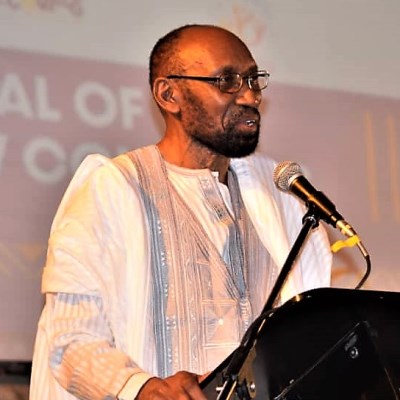
Writing on Reception Studies and Audiovisual Translation, Di Giovanni, argues that there has recently been an increased awareness ‘of the need to understand the audience and their preferences’, (Di Giovanni, E (2020), in order to increase media access by cultural audiences. This has led to the creation of new styles, modes and content in audiovisual translation. Chinese films, with their ubiquitous reach through action, have greatly assisted in developing this reception concept, allowing distinct reading and interpreting communities to shape how audiences are impacted by the narration of the interpreted text. These are texts that are translated for purposes of narrating a film which is nominally different from translation in its common practice. The practice is therefore called trans-narration for purposes of this research and for easy reference.
I have supported investigations into the growing research area of the lucrative business side of cinema, that of distribution, one that demands a much wider palate of introspection than normally done. For example, we recognize that the absence of African films from cinemas in Tanzania continues ‘the practice of dumping Hollywood product at low cost into African markets that has continued to quash any possibility of a sustainable African film industry’, (Lobato, Ramon. pp 173). Likewise, it is an inescapable fact that the stranglehold that the West has over cinema distribution in Africa has impacted on the way that Africa reacts to cinema distribution. The love for cinema amongst African audiences is insatiable, leading to the important work of supporting novel ways of accessing film and developing new audiences. That has sometimes inevitably led to opposite perspectives that even posit antagonistic views.
To Western cinephiles, dubbing is viewed as a faux pas, an activity which overwrites the original creativity of a movie. However, in Tanzania, it is a common practice usually carried out by DJs—a term used for local dubbing artists who translate mainstream blockbusters from the West into Kiswahili—in order to introduce alternative cinematic experiences to otherwise unavailable audiences, (Elisha Tawe, 2022).
The question therefore becomes, “How can we recognise or deal with the new?”, as Walter Ong asks, warning that even where there are no decent references to a practice which seems “barely respectable”, criticized as being at ‘the boundaries of the precedented and at the limit of the thinkable’, we still need to give vent to that unthinkable because of the nature of thought, (Ong, Walter, 2010). The technologizing of the word allows us new avenues for thought creation, and therefore set new discourses to negotiate those changes. It adds to the resources which the technology of orality makes available to human consciousness.

But Roman Lobato argues that, ‘The broad argument is that analysing film from the vantage point of distribution can open up a space for a different kind of transnational film studies, one founded on a materialist model of how audiences access cinema’, (Lobato, R (2009)).
It is in that vein that we propose to discuss a phenomenon that is often not deliberated at the level of film theory mainly because it is not practiced in the West and its research can only be undertaken by local researchers who understand the cultural nuances of the practice. A few researchers have attempted such studies resulting in some descriptions of these practices in Tanzania. It has been compared to older practices in Japan and Germany and newer ones in Uganda, Nigeria and elsewhere in Africa. (Krings, M (2020) Ondego, O, (2008), Englebert and Nginjai, (2010); Lagarriga, D (2007)).
In Tanzania, the video viewing and sales parlors (the Vibandaumiza, or Vimkandala or Vibanda, or Video Halls as they are variously called) is a phenomenon that grew out of the piracy of videos sold on VHS (in the 1970s) which later transformed into DVDs in the 1990s. Suffice to add that currently digital products on USB flash drives or Youtube downloadable streams are the technology of practice in the country. The current practice of remediating films from diverse cultures such as the Chinese, American, Nigerian and Korean to Tanzanian audiences has spawned a thriving socio-economic activity of great import. Done through the audio narrative, audiences have been cajoled and entranced into a filmic story through the artistry and imagination of the Video Jockey or the DJ, as they are popularly known in Tanzania.
Research on the remediation of films, found that the situation in Tanzania was not unlike in many other countries in Africa including in Nigeria and Uganda, practices that have had immense impacts on the Tanzania film Industry. However, what stands out in the Tanzanian experience is the Swahili language video narrator and the adulation they have been able to build amongst audiences, to the extent where they have mastered the craft to become superstars in themselves, commanding hundreds of thousands of followers on the ground.

DJ Black recounts of DJs from Tanzania travelling with bouncers to control excited followers in the DR Congo. This is based on information I gathered in Tanzania between June 2022 and February 2023 through extended interviews with DJ Black and a number of people who still view the films and are great adherents of the trans-narrated film culture.
The reason for their popularity lies in the actual practice of the voice narrator, the VJ (Veejay) or DJ (Deejay) whose artistry has never been acclaimed or even fully commended by academics or cinema theoreticians. Understanding the language of the performance and the environment of its birth, growth and direction, allows us now to consolidate the view that sees its creative impulse as being more important than its negative commercial connotations. We begin from the premise that,
Whether performed live or mediatized as voice-over on DVD or VHS cassette, video narration exposes the reality of film as being mediated, heightens awareness of the viewing situation and fosters the critical inquiry of the audience, (Matthias Krings, 2012).
I will look into the new opportunities availed through digital technology that has assisted the translation of Chinese culture to global audiences through film. Through this remediation process, we look at Swahili language speaking audiences and the influence of Kung Fu films in the digital age, and the role of business in advancing media reception.
To the Chinese government there might have been a different purpose for the economic development and modernization premise of the Soft-power base of their contemporary social political and economic policy. Indeed, the soft-power of film has shaped Tanzanian audiences to appreciate the implementation of practical visions of Chinese global power and appeal. Confucius Institutes, international communication, education and training exchanges, and public diplomacy spectacles are the common key channels or mechanisms of China’s soft power, but film is of similar or greater impact than some of these conduits. In this instance film makes the advance on an intended target almost subliminally, if not outright insidiously, through its methodology of access and impact.
Remediation… is defined as a ‘style of visual representation whose goal is to make the viewer forget the presence of the medium (canvas, photographic film, cinema, and so on) and believe that he (sic) is in the presence of the objects of representation’, (Bolter and Grusin, 2000, pp 272-73).
Ajabu ajabu is an audio-visual house & collective working on preservation, production, and presentation. It has been working to reactivate archive film in Tanzania through a model of radical access. Central to this work has been a collaboration with local film ‘translator’ / narrator, DJ Black, who informally reinterprets and recontextualises films into a form more familiar to local audiences. The collaboration has led to a collective reimagining of the act and the art of preservation along modes of non-hierarchical access — advocating for the practice of informal narration as a critical consideration for the industry and asserting it as an intangible cultural practice worth protecting.
Following lively discussion around Apostles of Cinema and DJ Black’s practice at the EYE International Conference at the EYE Film Museum in Amsterdam Ajabu Ajabu have begun thinking around pathways towards safeguarding DJ Culture in Tanzania. As a mechanism they could work towards engaging artists like DJ Black who are constantly at risk of criminalisation on a national and international level.

CONCLUSION
We believe strong arguments could be made to advocate for the practice to be considered ‘fair use’ when questioned around copyright infringement upon international films — operating as creative commentary, reinterpreting the work with little to no market harm.
We also feel that as a creative practice — almost entirely unique to Tanzania — it could be protected to some extent by inscription onto UNESCO’s list of Intangible Cultural Heritage Practices. I think there’s a strong argument to be made here in how the unique national practice works to preserve film (through archival case studies), to preserve community culture, and, in some cases, to preserve endangered languages. The visibility that would come from getting on that list would undoubtedly help to legitimise the practice and reduce harmful political intervention into the spaces.
As I noted earlier, I have just concluded the 26th edition of the Zanzibar International Film Festival (ZIFF). A policy area that ZIFF is foreground this year is in the use of the archive. The film archive has always been seen as a physical repository of special and unique productions. This year we open up the concept of the archive and propose the archive not as a dead-end but as a potentially creative space.
With the screening of mostly unseen films of the Southern Africa liberation struggle we propose another use of the archive: engagement with histories from new perspectives. The argument around the transnational approach of cinema as a development strategy has not seriously been engaged with. Let the conversations begun here move us to another space, for the future is not unidirectional.
As the African saying goes, ‘Move like the Chameleon: keep one eye on the past and the other on the future’. We bring the trans-narration of film as a look into the purvey of creativity even as we notice the source of the business being piracy. Piracy is bad news, of course it is… but we would argue that, in an on-demand and multi-device world, restricting access to consumption might be even worse.





